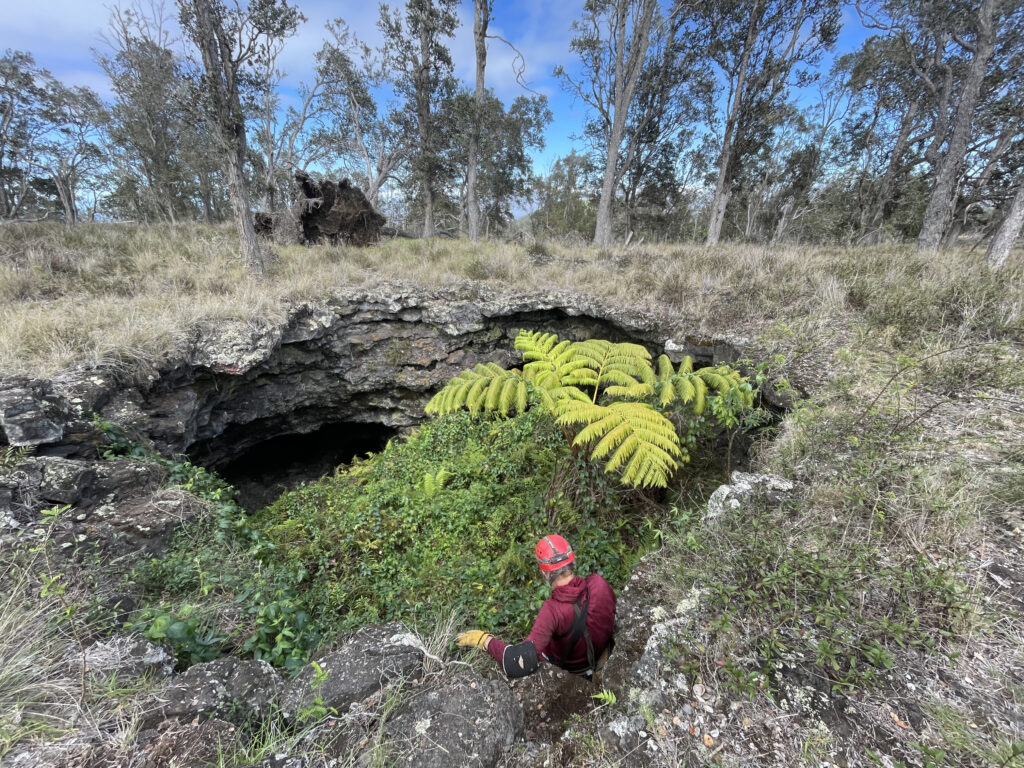Riparian Zone and Streams’ Role As Larval Mosquito Habitat and Pathways to Invasion
Dennis LaPointe, a research ecologist with USGS-PIERC, and his team are conducting important research on the mosquito vector of avian malaria and its connection to habitat availability. Their focus is on the USFWS Hakalau Forest National Wildlife Refuge (NWR) and the adjacent USFS HETF Laupāhoehoe Forest Reserve, which play a crucial role in conserving native Hawaiian forest birds. They are particularly interested in understanding how the larvae of Culex quinquefasciatus utilize riparian habitat and how climate change impacts this habitat in Hakalau Forest NWR, the last and best habitat for native Hawaiian forest birds.
The objectives of their study include collecting climatic and hydrologic data to assess climate change impacts, determining mosquito habitat and productivity associated with streams, and developing a model to assess mosquito occurrence and abundance across the landscape under present and future climatic conditions. Field studies have been conducted in Hakalau Forest NWR, where mosquitoes are still rare, and nearby Laupāhoehoe Forest Reserve where mosquitoes are more common.
While the research in the Laupāhoehoe Unit has been completed, LaPointe plans to continue the research in Hakalau Forest NWR to understand mosquito distribution and disease transmission under different climate change scenarios. The ultimate goal is to understand why Culex quinquefasciatus has not invaded Hakalau Forest NWR, assess the likelihood of future invasions due to climate change, and develop predictive models for this relationship.

Biodiversity Survey of Puʻuwaʻawaʻa Lava Tube Systems
Megan Porter, a Professor at the University of Hawaiʻi at Mānoa, is leading a team in studying invertebrate populations in lava tubes in the HETF Puʻuwaʻawaʻa unit. The last inventory was completed in 2003 and revealed new species that have yet to be described. Recently, new passages have been mapped, but comprehensive biological inventories have not been conducted in these areas.
Cave species in Hawaiʻi are diverse and make up a unique ecosystem of arthropods that exist beneath the surface.However, due to their difficult access, their diversity is not well-known and they are critically threatened, both locally and globally. Porter and her team have made four trips to the Delissea and Henehena cave systems and have documented over 35 taxa, including 12 cave-adapted species. They have potentially discovered a new species of cave-adapted planthopper and collected a new species of pseudoscorpion. Further research is needed to accurately describe these species.
The team plans to collect more specimens to confirm the identification of the pseudoscorpion and potentially discover additional species. Porter hopes that their research will highlight the importance of the connection between surface forests and subterranean habitats in sustaining lava tube communities. By better understanding these relationships, conservation efforts can be more effectively targeted.

